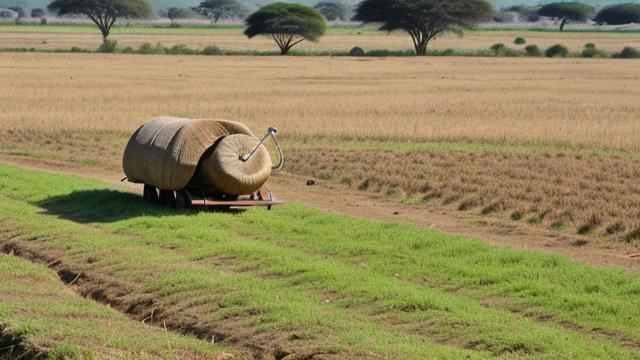The Effects of Chronic Snail Migration on Rural Landscape Architecture in Sub-Saharan Africa
Sun, 17 Aug 2025 10:52:05 GMT

The humble snail: a creature so slow, it makes us all look like we're sprinting marathons. And yet, in sub-Saharan Africa, these slimy creatures have become a force to be reckoned with, leaving their mark on rural landscape architecture.
It all started when a group of enterprising snails decided they'd had enough of being stepped on and eaten. They decided to take matters into their own hands – or rather, their own foot. And so, the great snail migration began.
As the snails made their way across the savannah, they left behind a trail of slime that quickly became a hallmark of rural African landscapes. At first, farmers were perplexed by the sudden appearance of these slimy paths. What's this nonsense? one farmer asked, scratching his head. I'm trying to grow crops here, not navigate a obstacle course!
But as the snails continued their march, something strange began to happen. The slime they left behind started to attract all sorts of creatures – from bees and butterflies to birds and even the occasional curious tourist. It was like the snails had created their own personal ecosystem, complete with its own unique set of rules.
Farmers soon discovered that the snail trails could be used as a natural irrigation system. The slime helped to retain moisture in the soil, making it perfect for crops like maize and sorghum. And with the added bonus of attracting beneficial insects, farmers found themselves reaping a bountiful harvest.
But that wasn't all. As the snails continued their journey, they started to leave behind other gifts – tiny little mounds of soil that seemed to pop up out of nowhere. At first, people thought it was just the usual animal activity – rabbits and antelopes, perhaps? But no, these were something more. They were snail burrows.
And what an impact they had! As the snails dug their tunnels, they uncovered hidden water sources that had been lying dormant for centuries. It turned out that many of Africa's most valuable minerals – gold, diamonds, and platinum – were hiding beneath the surface, waiting to be discovered.
The discovery of these mineral deposits sent shockwaves throughout the region. Snail enthusiasts (yes, you read that right) flocked to the area, eager to get their hands on a piece of snail history. And as they dug deeper, they uncovered entire cities hidden beneath the surface – whole towns built by some ancient civilization.
It was like something out of a movie – Indiana Jones and the Snail's Quest for Gold! The locals were amazed, the tourists were thrilled, and the snails? Well, they just kept on sliming their way across the continent.
But as with all great power comes great responsibility. As the snails continued to migrate, they started to leave behind a legacy of destruction. Crops that had been carefully tended for years began to wither and die in the slime's wake. Livestock became trapped in the tunnels, unable to escape. And those pesky bees? Well, let's just say they got a bit too excited about all the nectar.
It was a delicate balance, one that required careful management from the farmers and snail enthusiasts alike. But as it turned out, the key to success lay not in trying to stop the snails – but rather in learning to live with them.
So what can we learn from this strange phenomenon? For starters, we learn that even the slowest of creatures can have a profound impact on our world. We also learn that sometimes, it's better to just roll with the punches (or should I say, the slime trails?) and see where life takes us.
And finally, we learn that snails are not just slimy little pests – they're actually pretty amazing creatures with a lot to teach us about resilience, adaptability, and the power of slow and steady progress.
In conclusion, the next time you find yourself in sub-Saharan Africa, take a moment to appreciate the humble snail. They may be small, but their impact on rural landscape architecture is anything but. And who knows? You might just stumble upon an ancient city hidden beneath your feet – all thanks to a few slimy little friends.
But don't just take my word for it. Here are some quotes from people who have witnessed the snail migration firsthand:
I've seen things I never thought I'd see in my life, said one farmer, shaking his head in wonder. Snails covering the entire savannah? It's like they're taking over.
It's like a dream come true, said another, eyes shining with excitement. I never knew snails could be so... useful?
And then there's this: